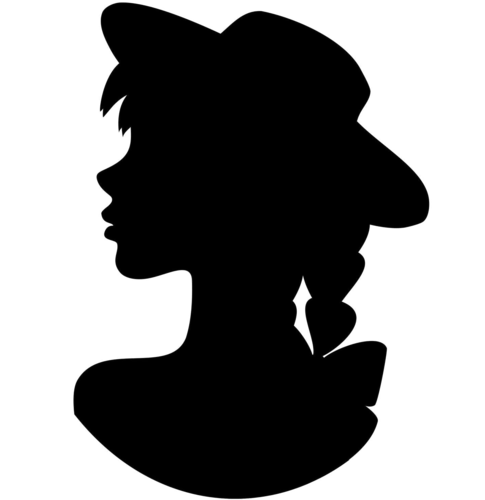Is This My Anne
In 1921 Anne appeared in 'silent' pictures. Mary Miles Minter starred as Anne, but I did not like her. She was too 'sugary sweet' – not a scrap like my gingery Anne. There was a good Matthew and a good Marilla and a passable Gilbert, but on the whole the picture made me furious. The producers evidently thought it had to be 'pepped up', and they introduced a lot of absurdities – among others, Anne at the door of her school, a shotgun in hand, standing off a crowd of infuriated villagers who were bent on mobbing her because she had whipped one of her pupils! The silent film was a huge box-office success but in mid-career it suddenly ceased to be. It had been advertised for release in Great Britain, but it was never shown and Mary Miles Minter disappeared with it. I never knew the reason for years. Then, one day in a railway station I bought a book for train reading with the delightful title, Twelve Unsolved Murder Mysteries. Among them was that of William Desmond Taylor, the director of Anne, who had been found murdered on the floor of his Hollywood bungalow. The murderer, or murderess, was never discovered.
There were two things in the silent film that especially enraged me. One was the fact that in a scene at Queen's Academy, on the occasion of Anne's graduation, the Stars and Stripes were prominently displayed! The other was that on her way to a Sunday-school picnic Anne foregathered with a skunk which she mistook as a kitten!
Mary Miles Minter was not suspected of it, though it ruined the careers of two other stars, but the police found in Desmond's desk a packet of letters which proved that the little golden-haired star who was heralded as a rival to Mary Pickford had been in love with her director – who had a wife somewhere – and the great American public threw back its head and howled. Her career was ended and every film in which she had starred was hastily withdrawn from circulation.
That was thirteen years ago. The other day I sat and watched the 'talkie' with mingled feelings. On the whole I like it much better than the silent picture. Naturally, no picture can, in the very nature of things, reflect the characters and setting just as the author conceived them. So at times I had the sensation of watching a story writen by somebody else.
The little girl who played the part of Anne – whom we must call Anne Shirley, since she has taken that name for the screen – is a good Anne. There were many moments when she tricked even me into feeling that she was Anne. I loved the 'rick-rack' braid on her pinafore. It was just what I wore myself once. Matthew, whom I have always seen with a long grey beard, seemed a stranger to me to me at first, but he was so good that I finally forgave him his clean-shaven face. Oddly enough both Matthew and Gilbert Blythe were exceedingly like the Matthew and Gilbert of the silent pictures, though entirely different people. Marilla was not the tall, thin, austere Marilla of my conception, but it was impossible to help liking her. I had, for the time being, the conviction that although Marilla was not the least like that, she should have been.
Of all the cast I liked Mrs. Barry the least. They tried to make a composite of Mrs. Barry and Rachel Lynde, and the hybrid result was not satisfactory. Diana was a washout.
There were no American flags in the picture. Canada and the Island were given some credit for the story. Prince of Wales College was even mentioned by name. Which indicates some faint glimmerings of a sense of geography on the part of Hollywood which seemed entirely lacking in the silent version. The opening views are real Island pictures but the rest of the setting is California, not Prince Edward Island; and 'Green Gables' is New England colonial and not an Island farmhouse. The river where Anne was nearly drowned, while dramatizing Elaine, is not my blue Lake of Shining Waters. But how could it be? One must not be unreasonable.
Naturally, the introduction of dialogue into the picture adds to the verisimilitude and is a distinct asset to stories which, like mine, owe much of their interest to the 'talk'. The producers sent me a copy of the script, but I had no 'say' in it in any way or in any features of the story which was bought outright from the publishers. For two-thirds of the film my story was followed with reasonable fidelity. In the remaining third the producers' 'produced' a narrative of their own for the purpose of providing Anne with a love story. They dragged in the old Montague-Capulet motif and everything ended bee-yew-tifully, with Matthew – who died in the book – rescued from the brink of the grave. But I am devoutly thankful that they did not end the story with a lingering kiss between Anne and Gilbert. Had they done so I would have risen up and shrieked.
On the whole, the 'talkie' gave me a much greater sense of reality than the silent picture. And I looked back to the evening of long ago, when I began the story of Anne with a smile and a sigh. For it is a 'far cry' from those days to these, and the creation of the story and its characters and atmosphere gave to me a delight that Hollywood cannot give or take away.
To see one's own story on the screen certainly provides plenty of 'thrills'. But one always wonders!
Information
- Author: L. M. Montgomery
- Publication: Chatelaine
- Date: January 1935
- Link: Is This My Anne
Notes
References
See also
